How to Start Baby Led Weaning with Confidence
- April 28, 2025
- Last Updated: June 13, 2025
- 0 Comments
- Baby Led Weaning
If you’re looking for a guide to start baby led weaning, this is it! As a Registered Dietitian mom of three, I break down when to start baby led weaning, how to do it, first foods for baby and other considerations!
As an Amazon Associate, I may earn from qualifying purchases. You can read more here on our Disclaimer and Privacy Page.
Note that while I am a Registered Dietitian, I am not giving specific feeding advice and always advise consulting with your pediatrician for your child’s specific needs.
Starting solids with your baby can feel both exciting and completely overwhelming—especially with so much conflicting information out there.
As a mom of three (and having done baby led weaning three times), I’ve been in your shoes, and I know just how refreshing the right guidance and encouragement can be.
As a Registered Dietitian and mom, I figured introducing solids would come as second nature.
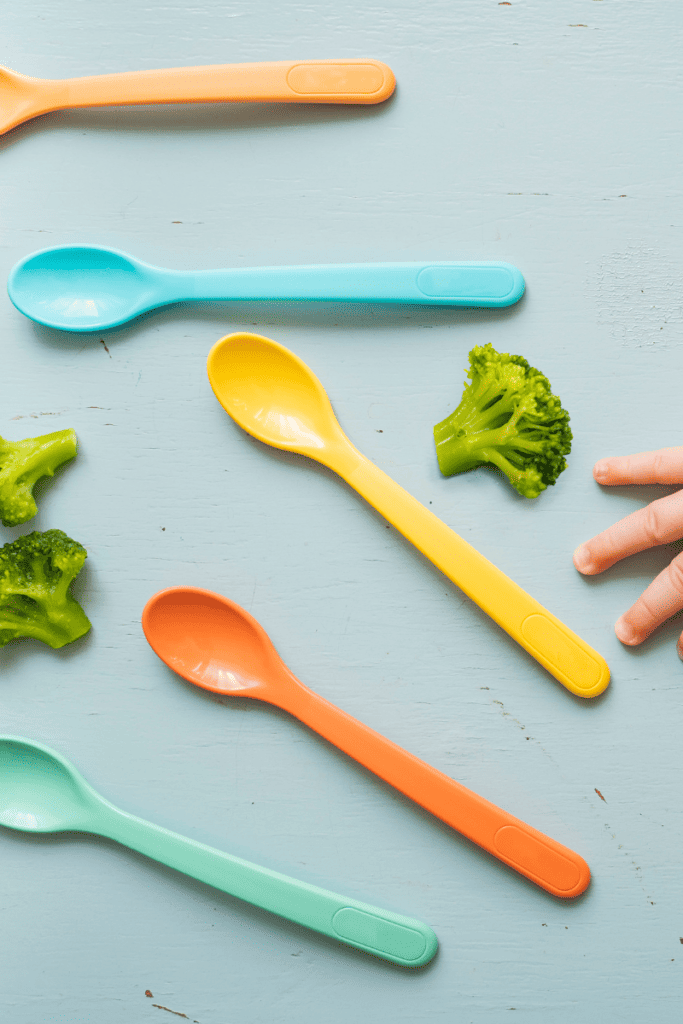
But, truthfully, when you become a parent, you don’t have prior experience feeding an infant. You’re also doing something brand new, so there is a learning curve. My learning curve involved learning everything I could about baby led weaning, and I haven’t looked back.
If you’re curious about how to start baby led weaning, when to start, what foods to start with, etc., you’re in the right place.
What is Baby Led Weaning?
Baby led weaning (BLW) is a feeding approach that gives babies the autonomy to feed themselves from the get go.
Rather than the traditional idea of starting solid (spoon-feeding purées), you offer the baby safe, age-appropriate finger foods and let them explore textures, flavors, and satiety on their own terms.
Not sure how baby led weaning compares to purées? I’ve written about that here: Baby-Led Weaning vs. Purees. You can also keep this in mind if you’re starting baby led weaning after purees.
This way of baby feeding has gained much popularity in recent years – it supports autonomy, self-regulation, curiosity and exploration.
Babies are born intuitive eaters. They haven’t experienced diet culture or food rules. All they know is what their natural bodies are telling them to do – eat when they’re hungry, stop when they’re full. This is the most pure definition of intuitive eating there is.
Allowing babies to learn to feed themselves can help them recognize hunger and fullness cues without interference. That sense of food autonomy also helps lay the foundation for lifelong healthy eating habits.
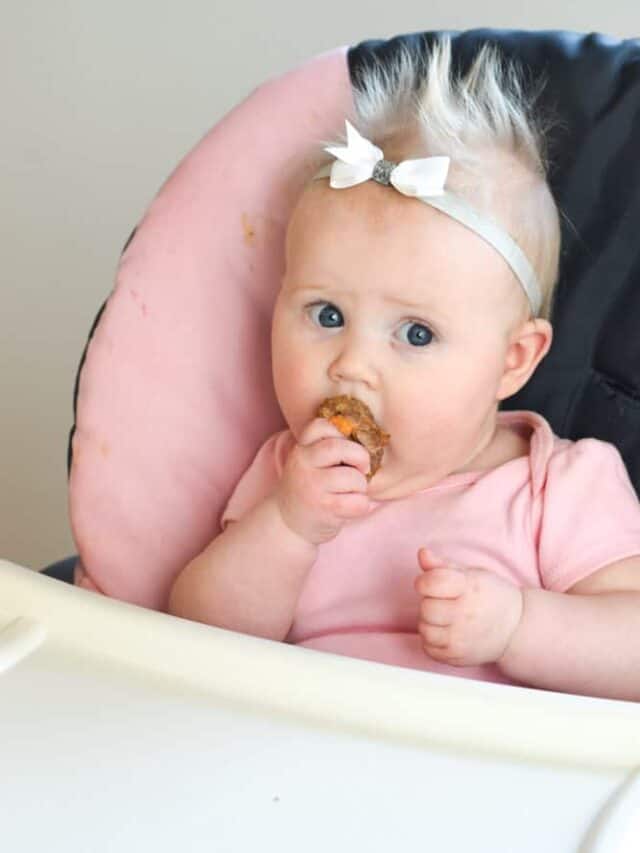
While you do want to serve modified foods (cut in an age-appropriate way), for the most part, babies can eat anything you eat. You may just have to modify it slightly.
When to Start Baby Led Weaning
Most babies are ready for solids between 4-6 months. Many pediatricians will give the go-ahead when babies have met the signs of readiness, such as:
- Sitting up unassisted
- Baby has good head and neck control
- Lost the tongue-thrust reflex (doesn’t push food out) – Some experts also recommend having the tongue thrust disappear before starting solids. However, this may not be necessary.
- Showing an interest in food/grabbing for food
Whenever you are ready to start baby led weaning, I recommend taking an infant CPR class. We do it online each year (10% off) as well as a choking response course, so you can be prepared in case of an emergency.
How to Start Baby Led Weaning
So, by far, the most common concern from parents is how to start baby led weaning. First off, let me take some of the fear and intimidation away right away – you don’t have to cook a million recipes right off the bat.
You’ll likely start with just one food once a day and then gradually work your way up once you and baby are comfortable.
Get the Go Ahead to Begin
Once your baby has met the signs of readiness and you’ve gotten the go ahead to move forward with solids, you can start!
In terms of equipment, you don’t need a ton! You need a sturdy, quality high chair that helps baby sit up straight, and ideally, has a foot rest to put their feet on.
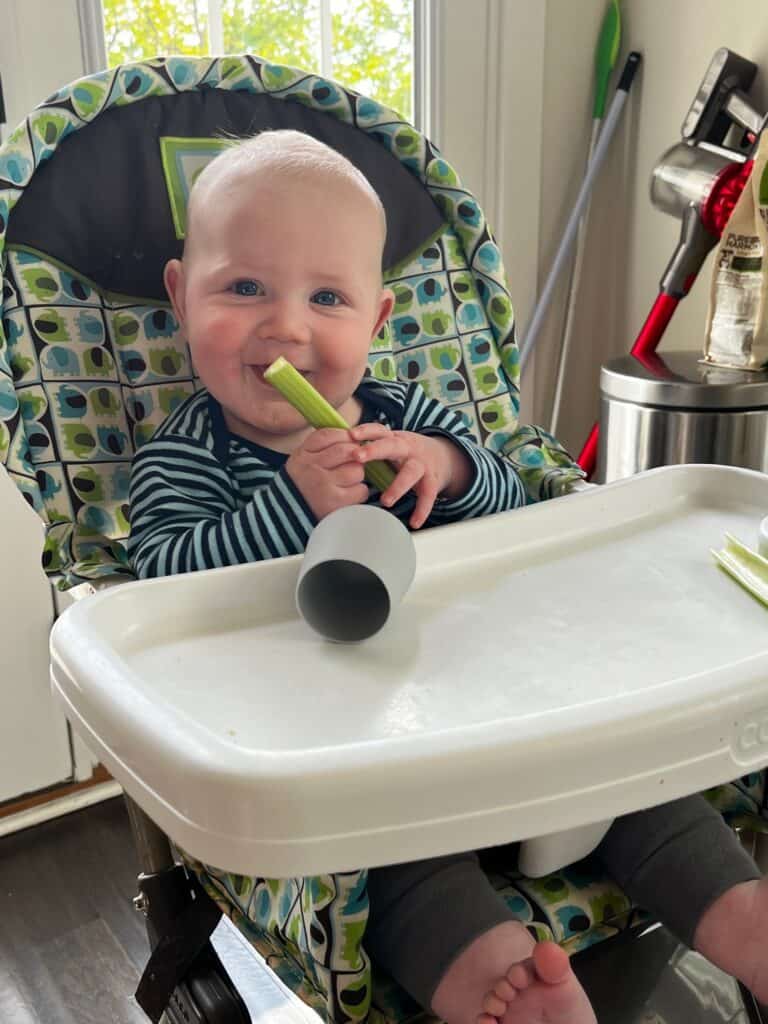
For plates and serving things, we pretty much use all of the EZPZ products since they have an awesome development team. The mini cup, utensils, bowl and tiny placemat are all great for babies just starting solids!
You can see more of my favorites here!
I generally recommend parents start with one snack or meal a day. At 6 months old, a babies’ diet will still primarily be breastmilk or formula. Many babies may not be eating or swallowing much of the solids, initially. And that’s ok.
Starting solids is not only an opportunity to get in extra nutrition through food, but it’s a sensory and exploratory process for baby, too.
Choose What Foods to Start With
There are several different opinions on the internet about the best foods to start with for baby led weaning.
There’s no one “perfect” first food, but safety and texture matter most – in general, stick to soft, grabbable foods. A lot of parents feel comfortable with avocado, sweetpotatoes or bananas since they have a naturally soft texture.
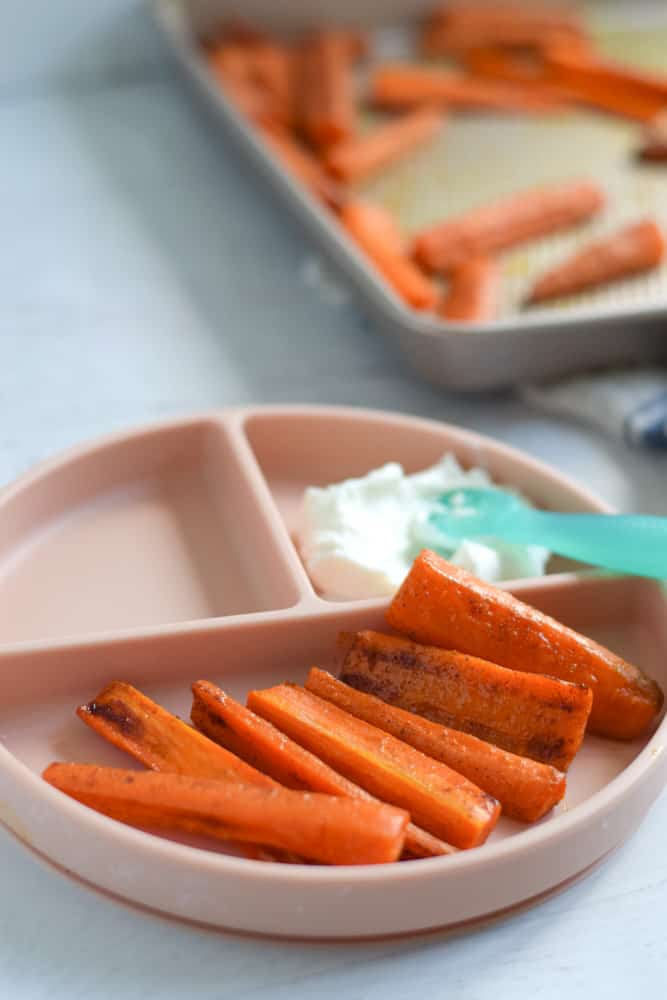
Personally, I prefer starting with veggies first because they are less sweet.
Roasted or steamed carrot sticks (not carrot coin shapes) can also be a good one because baby can hold them. Baby may suck on it or gum off a little piece to taste.
Here are some ideas and recipes for first foods for babies.
- Avocado for Baby-Led Weaning
- Acorn squash for baby
- Baby oatmeal bites
- Broccoli for Baby-Led Weaning
- Chicken for Baby-Led Weaning
- Roasted Carrots for baby
- Sweet potatoes for baby led weaning.
Start With One Food at a Time
Starting with just one food initially reduces some of the overwhelm. Remember, this is all new to babies!
Don’t just stick to fruits and veggies, though. We want to start including other food groups and nutrients!
For instance, you could offer avocado slices one day and full-fat yogurt for baby the next day.
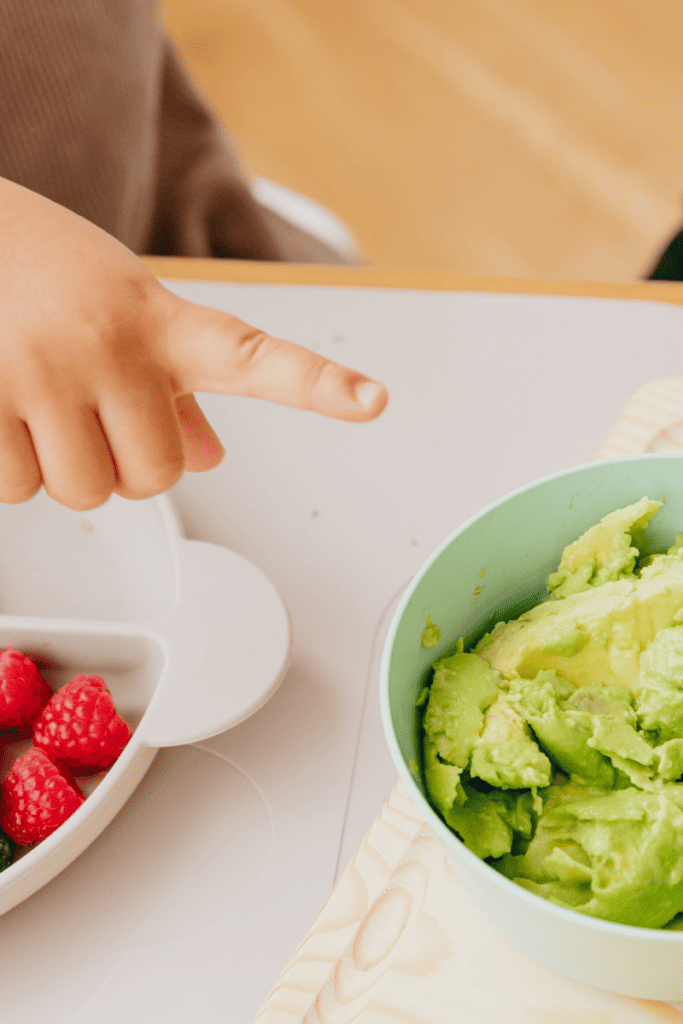
What About Purees?
One of the myths of baby-led weaning is that you can’t offer purees. However, you can certainly offer purees alongside your baby led weaning journey, or to help introduce you to solids.
I prefer ore-loading baby’s spoon and letting him/her self-feed. That way, you’re getting the autonomous benefits of baby led weaning with a smoother, easier texture.
Here are some of our favorite puree recipes:
Start to Incorporate More Foods
I do generally recommend getting healthy fats and iron-rich foods in fairly early, too. Around the 6-month mark is when mom’s iron stores start to decrease in breastmilk (if baby is breastfed), so getting iron in through food will be important.
Note that baby formula is fortified with iron so formula-fed babies will still be getting iron.
Some great iron-rich foods for baby led weaning include beef, chicken, salmon, oatmeal or iron-fortified cereal, eggs, beans or lentils.
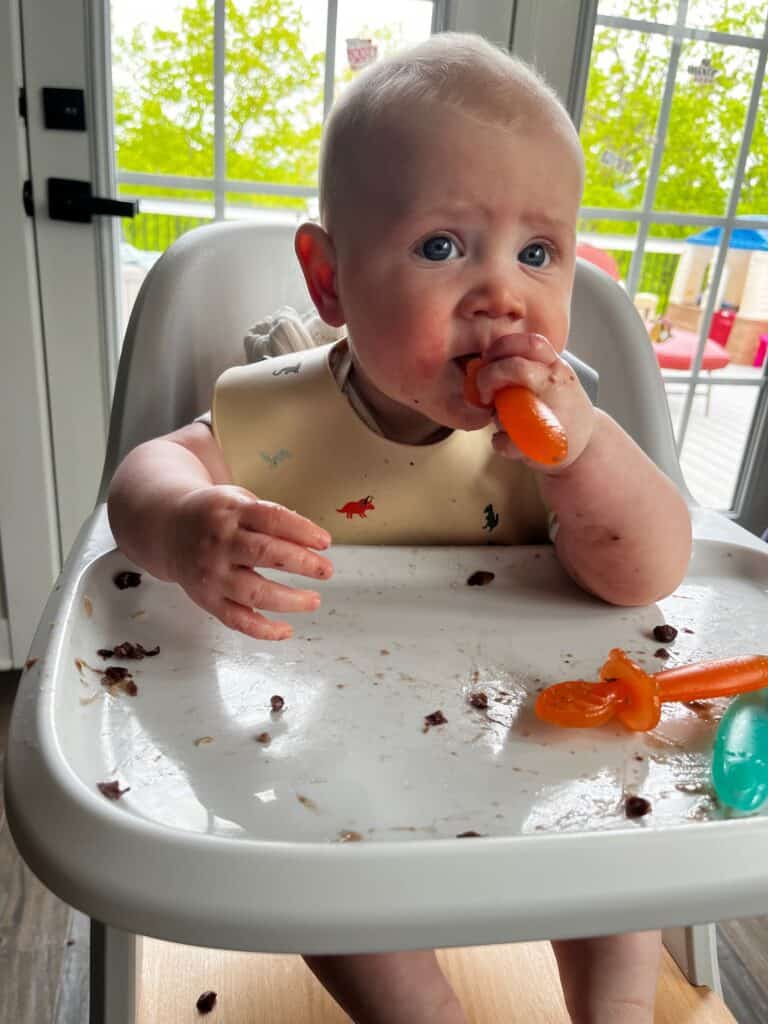
Stressed about feeding your baby?
Unsure what foods to offer?
Check out our baby led weaning ebook that has several recipes for every time of day and a sample feeding schedule!
Once your baby is rolling with solids, variety is your best friend. After a few weeks or months of consistently offering food to baby, you can start to mix-and-match foods, or serve food combinations if baby has had both separately (for example, this baby waffle recipe or scrambled eggs with baby french toast sticks).
I love incorporating different textures, flavors, and food groups in food to start baby led weaning.
You don’t have to overcomplicate it—simple meals are often the best. Here are some baby breakfast ideas and other BLW Dinner Ideas you can pull from.
When possible, I’ll offer two foods, generally an iron source and Vitamin C source food, like in these baby-Led weaning meatballs. The reason for this is that Vitamin C helps enhance iron absorption.

Let the Mess Be
Expect food on the floor, the walls, their hair… and that’s okay. It’s part of the learning process!
Use a splash mat and some of these baby tools – and try to let go of the mess.
Sit and Eat Together
Babies learn by watching you! If they see you eating a food, they will try to eat it that way too. This is the powerful learning experience of sitting and eating together.
Believe me – things will change once they turn 12-18 months – enjoy them sitting still now!
Eat with them when possible and offer some of the same foods (modified for safety) to build connection and routine.
Control Your Expressions
As previously mentioned, the starting solids phase may be nerve-wracking for some parents. And most parents show their expressions on their sleeves.
However, if baby sees a panicked face or reaction from you (the parent or caregiver), the baby is more likely to feel stressed and worried if you are.
Therefore, some dietitians recommend parents sit on their hands in the initial stages to give baby a chance to learn without unnecessary intervention. Taking a CPR class is also a helpful thing to do to help you differentiate between choking and gagging and be more confident in your baby.
Introducing Allergens to Baby
The latest research on the topics of introducing allergen-foods to babies supports introducing the allergens early. Even the 2020-2025 dietary guidelines recommend this.
While this may sound scary and overwhelming, you don’t have to do them all at once .
There is scientific evidence that offering peanut products early on to high-risk babies (specifically those who have moderate to severe eczema) can reduce the risk of a peanut allergy in childhood.
RELATED: Tips for Introducing Peanut Butter to Baby Early
I recommend offering one allergen food at a time, and ideally during weekday lunches (when your pediatrician is open, just in case). Work with your pediatrician, or even an allergen specialist, if you have a high risk infant or extensive questions.
For instance, for introducing baby to peanut butter, you can mix some no sugar added peanut butter powder with breastmilk. Or, if you prefer, there are lots of peanut butter recipes for babies you could use, too! You can use a similar process with tree nuts.
For eggs, you also have a few options.
- Coat the eggs with chia seeds or flax seeds to make them easier to pick up.
- Cut a scrambled egg into strips to serve to baby.
- Offer a hard boiled egg, which is often easier to grip
- Make these egg muffins for babies and add veggies of choice.
When Do Babies Start Eating More?
Baby-led doesn’t mean rushing the process – it’s exactly as it sounds: “baby led.” Every baby is different.
Some take to solids quickly; others need a slower start. That’s okay. Follow their lead, offer safe food often, and remember that milk(breastmilk or formula) is still their main source of nutrition in the beginning.
Don’t be worried if your baby still doesn’t seem to be eating or swallowing much by 7-8 months. This was the case with my first – it took a while for her to get comfortable with food tastes and textures. She’s a great eater now!
Once baby starts eating more, you can progress to 2 meals a day.
Ideally, by 12-14 months old, baby is eating 3 meals a day. Here is a little more insight on the progression of feeding.
Does Baby Led Weaning Help Prevent Picky Eating?
BLW won’t magically prevent picky eating (no method does), but it does lay a solid foundation for mealtime independence. When babies are empowered to explore food at their own pace, it builds trust, which can go a long way during the toddler years.
Establishing positive food habits and following the division of responsibility in feeding is what you want to focus on.

Safety Considerations
Gagging vs Choking
Choking is probably the most common fear that parents have when starting baby led weaning—and rightfully so.
First off, I always recommend that parents take a CPR class before starting solids. It’s so important that we know what to do if choking does occur, and a CPR class gives us the confidence to intervene if and when necessary.
Secondly, I find that it helps if we change the narrative and think about a learning experience. In fact, babies are meant to gag early on.
Compared to kids and adults, babies’ gag reflex is located in the center of the tongue, more forward in the mouth. Therefore, it can be stimulated often, and that’s a good thing, because it helps teach baby where food should and shouldn’t go.
Food Texture
Serving age-appropriate foods and servings is the most important thing you can do as a parent.
For the most part, this means mashable food, or food that the baby can mash with their gums (or teeth, if they have any). If you can smush it between your thumb and index finger, baby’s gums can probably mash it up.
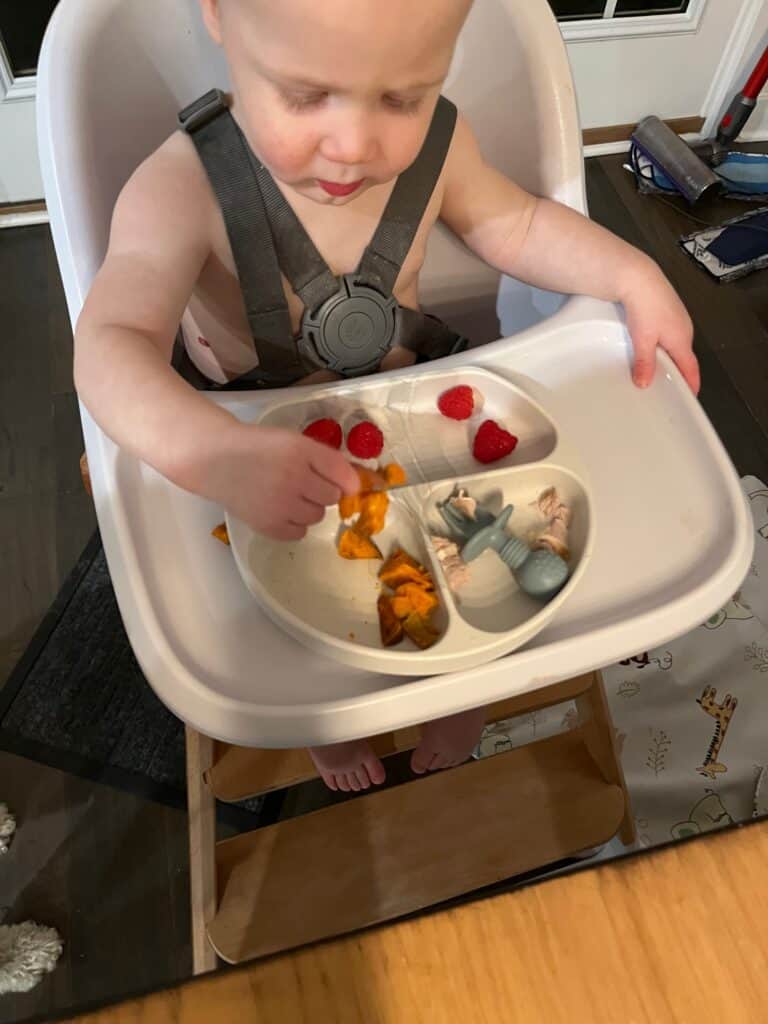
For example, don’t serve sticky, thick peanut butter to a baby – they won’t be able to handle that. Similarly, don’t serve nuts or other small food items that are likely to lead to choking.
If you are serving safe foods in a safe way, baby led weaning has no greater risk for choking than traditional spoon feeding.
Foods to Avoid
Here are some foods you should avoid for baby led weaning.
- High risk choking foods – You do want to avoid any foods that pose a high risk of choking, such as whole nuts and seeds, whole grapes or grape tomatoes, hot dogs, etc.
- Anything crunchy or sticky – For obvious reasons, these can be hard to swallow.
- Honey – Avoid honey before age 1, as honey poses a higher risk of foodborne illness to babies whose digestive systems are not fully mature yet.
- Added sugars – The WHO recommends avoiding added sugars before age 2 – meaning any sugar-sweetened beverages or foods, ultra-processed foods with added sugars, etc. Natural sugars from fruit and dairy products is okay.
- High amounts of salt – Babies kidneys are not yet equipped to handle and get rid of high amounts of salt, so limit salt. But you can use spices for babies to offer non-salt flavors!
- Cows milk until age 1 – Baby just needs breastmilk or formula as their main source of nutrition. You can introduce whole milk after age 1. You can still introduce it in recipes, but it shouldn’t be baby’s main source of nutrition.
Final Thoughts
There are several benefits to baby led weaning, was mentioned above. To review, some of the benefits include:
- learning autonomy with food
- learning to experience hunger and fullness
- curiosity
- experimenting with different flavors and textures
- bringing hands to mouth (hand-eye coordination)
Baby-led weaning, or even starting solids, can feel intimidating, especially when there’s so much noise and information online – beware of following all of the information online, especially if it is coming from someone who is not credentialed.
With the right tools and support, feeding babies becomes a rewarding and joyful experience. It’s one of my favorite things – watching a baby enjoy a meal!
It doesn’t have to be either or – you can do baby led weaning while including purees. Just pre-load the spoon so baby can learn to serlf-feed.
Baby led weaning can set the stage for more positive feeding experiences ahead. Whether you’re just getting started or navigating the toddler transition, trust your instincts—and your baby’s cues.
References:
- Brown A. No difference in self-reported frequency of choking between infants introduced to solid foods using a baby-led weaning or traditional spoon-feeding approach. J Hum Nutr Diet. 2018 Aug;31(4):496-504. doi: 10.1111/jhn.12528. Epub 2017 Dec 5. PMID: 29205569.
- CDC: Iron and Breastfeeding. Source: https://www.cdc.gov/breastfeeding-special-circumstances/hcp/diet-micronutrients/iron.html
- Ellyn Satter Institutue. Source: https://www.ellynsatterinstitute.org/
Explore More Recipes
Baby Led WeaningSupport Bucket List Tummy




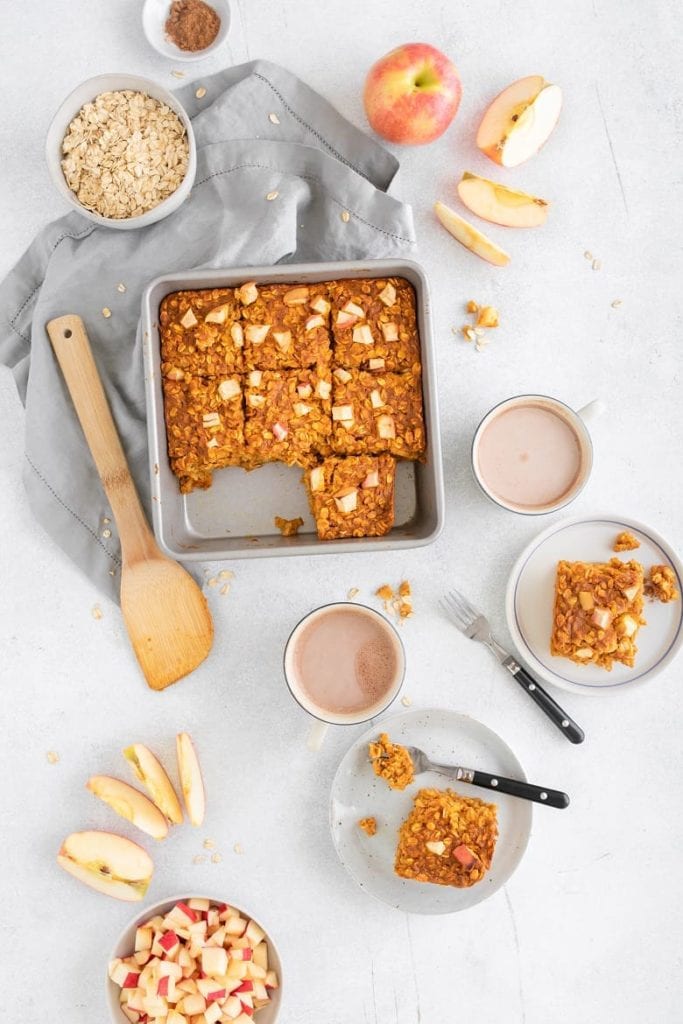

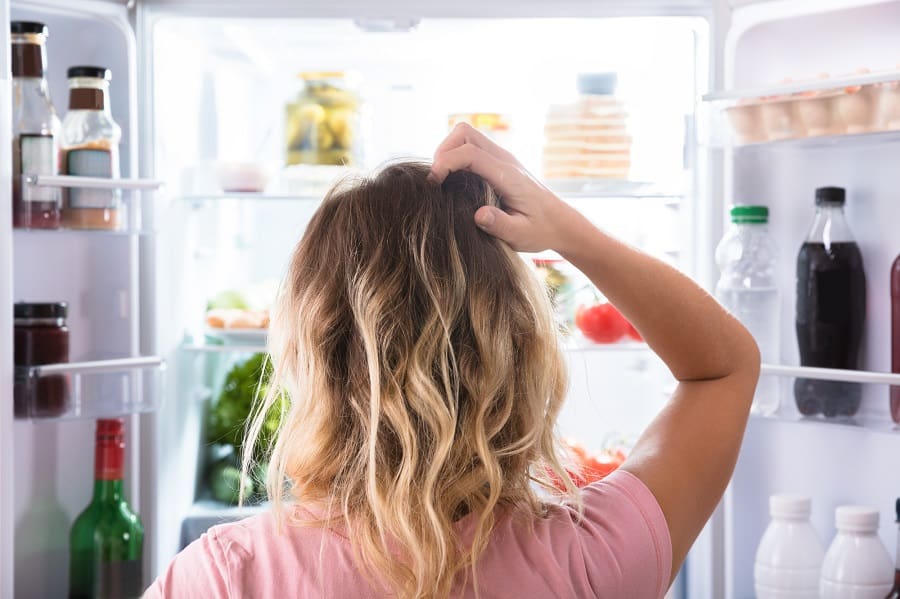
Like This Content?
Support Bucket List Tummy